Class 7 Civics Chapter 7 Notes - Markets Around Us
| Table of contents |

|
| Markets Around Us |

|
| Weekly Market |

|
| Shops in the Neighborhood |

|
| Shopping Complexes and Malls |

|
| Chain of Markets |

|
| Markets Everywhere |

|
| Markets and Equality |

|
A market is a place where goods are offered by sellers in exchange for money from buyers. We go to the market to buy everyday essentials, comfort goods, and luxury goods.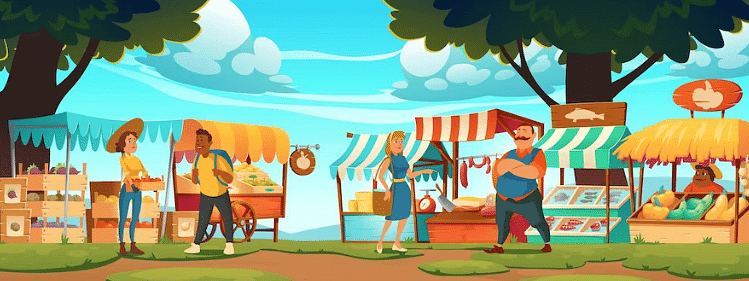 Outdoor MarketThere are many kinds of markets that we may visit for our everyday needs:
Outdoor MarketThere are many kinds of markets that we may visit for our everyday needs:
These can include shops, hawker’s stalls in our neighborhood, a weekly market, a large shopping complex, and perhaps even a mall. In this chapter, we look at some of these markets and try to understand how the goods that are sold there reach buyers, who these buyers are, who these sellers are, and the sorts of problems they face.
Markets Around Us
We visit the market to buy a variety of items— fruits, vegetables, milk, bread, rice, lentils, clothes, notebooks, biscuits, and more. If we were to list everything we purchase, the list would be quite long.
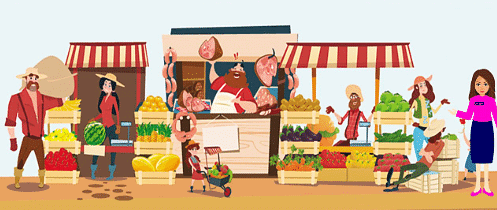 Market Around us
Market Around us
- There are various types of markets we might visit for our daily needs, such as local shops, neighborhood hawker stalls, weekly markets, large shopping complexes, or even malls.
- In this chapter, we will explore some of these markets and seek to understand how the goods sold there reach the buyers, who these buyers are, who the sellers are, and the kinds of challenges they encounter.
Weekly Market
A weekly market is named as such because it occurs on a particular day each week. These markets do not feature permanent shops.
- Each day, traders set up their stalls and pack them up in the evening, often relocating to a new spot the next day. India has thousands of these markets where people come to meet their everyday needs.
- Items in weekly markets are often available at lower prices. This is because the costs of setting up stalls are low. Permanent shops have high operating costs, including rent, electricity, government fees, and employee salaries.
- Weekly market vendors store their goods at home and frequently rely on family members for help, avoiding the need to hire additional workers.
- The abundance of shops selling similar products in weekly markets leads to competition, allowing customers to find better deals or negotiate prices if a trader's rate is too high.
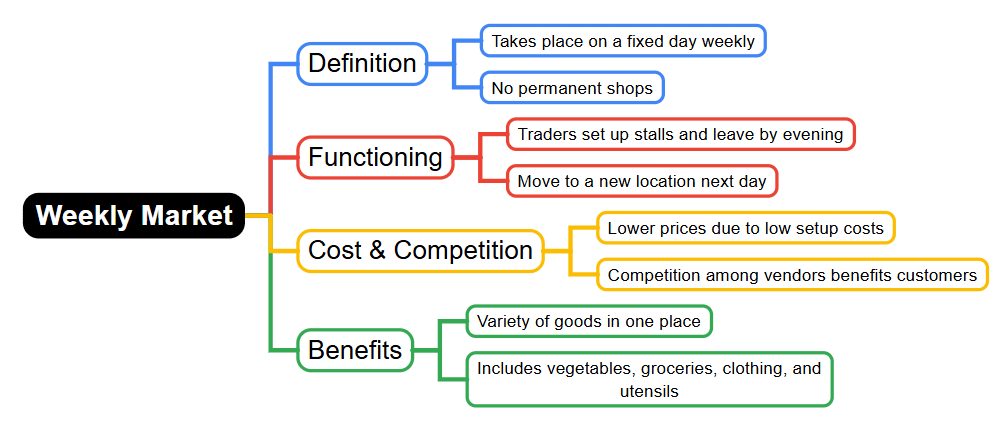
Benefits of weekly markets:
- Most necessities are available in one location.
- Items like vegetables, groceries, clothing, and utensils can all be found.
- Weekly markets offer a variety of choices and goods, attracting customers.
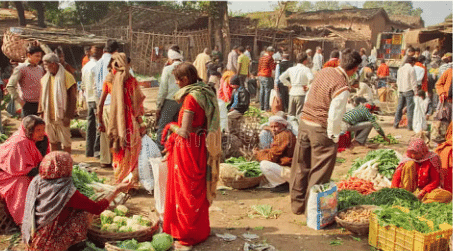 Weekly Market
Weekly Market
Shops in the Neighborhood
Weekly markets offer a variety of goods, but we also purchase items from other types of markets, including the shops in our neighborhood.
- Our neighborhood shops sell goods and services such as milk from dairies, groceries from departmental stores, stationery, eatables, and medicines from various shops
- Some shops are permanent, while others are roadside stalls like vegetable hawkers, fruit vendors, and mechanics.
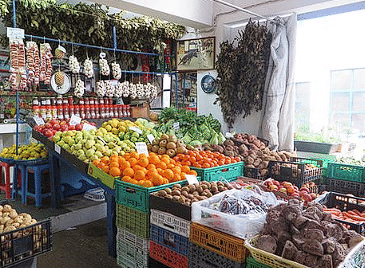
Benefits of neighborhood shops:
- Conveniently located near our homes and accessible any day of the week.
- Buyers and sellers often know each other.
- Shops often provide goods on credit, allowing payment at a later time.
Variety of sellers in neighborhood markets:
(a) Some have permanent shops
(b) Others sell goods on the roadside
Shopping Complexes and Malls
Apart from weekly markets and shops in our neighborhood, urban areas feature other kinds of marketplaces as well.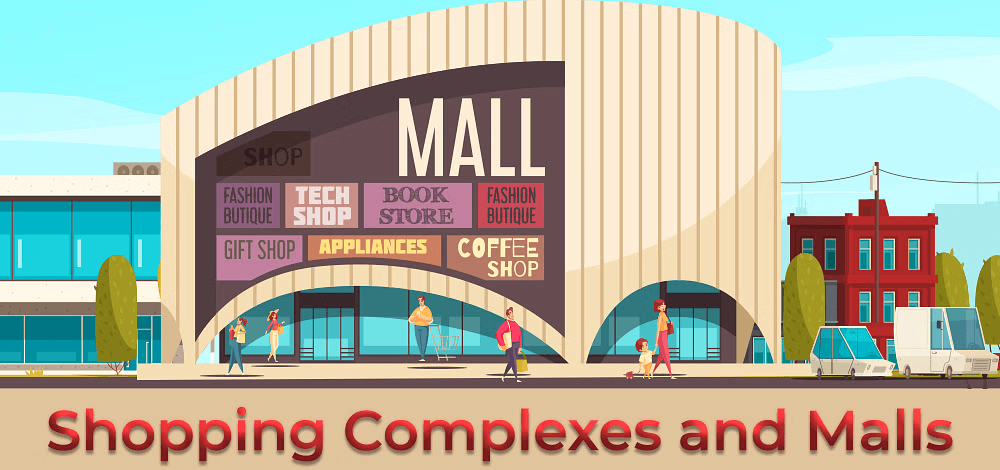
- Urban markets also feature shopping complexes with many shops.
- Modern urban areas have large, multi-storeyed, air-conditioned buildings known as malls.
- Malls contain shops on different floors offering both branded and non-branded goods.
- Branded goods are typically more expensive and heavily advertised, often claiming superior quality.
- Companies selling branded products often use large urban markets and special showrooms for distribution.
- Non-branded goods are generally more affordable and accessible to a broader range of people compared to branded goods.

Chain of Markets
Goods are made in factories, grown on farms, or made in homes. But have you ever wondered why we don’t go straight to the factory or farm to buy them? And why do you think the people making these things wouldn’t want to sell just one kilo of vegetables or a single plastic mug to each person? How do these good reach us?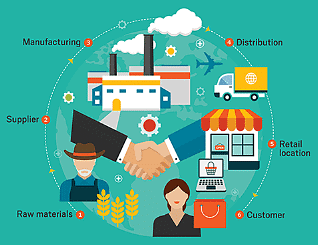 Chain of Markets
Chain of Markets
- Traders are people who buy goods from producers and sell them to others. They help move products from the makers to the people are final buyers.
Wholesale traders buy large quantities of goods at once.
- For example, a vegetable wholesale trader purchases big amounts, like 50 to 80 kilos of vegetables, rather than just a small quantity.
- These large amounts are then sold to other traders.
- In these markets, trading mainly happens between traders, helping goods travel to faraway places.
- The final trader who sells directly to customers is known as a retailer. This could be a vendor at a weekly market, a neighborhood hawker, or a shop in a mall.
Wholesale Market
Every city has areas for wholesale markets where goods first arrive and are then sold to other traders. Let's take an example of a toy car that you might want at your neighborhood shop. Let's understand how the toy car traveled from the producer (the makers in the factory) to you (the final consumer):
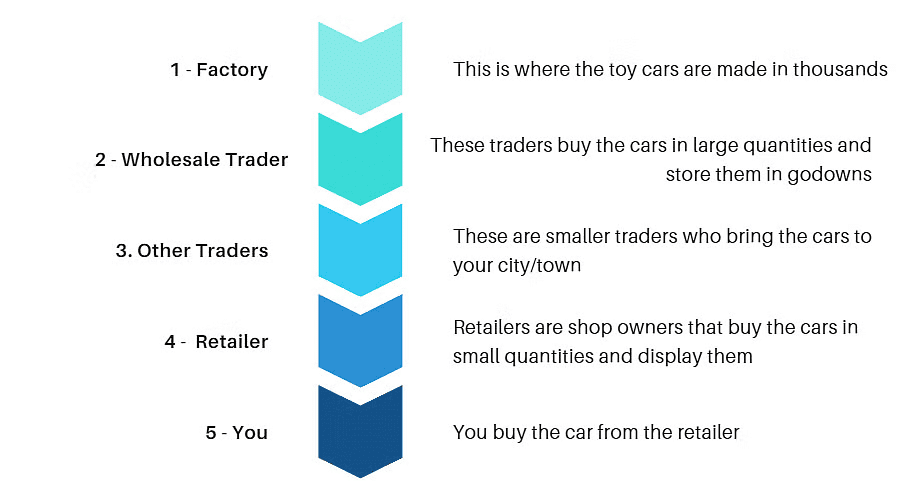 Chain of Markets
Chain of Markets
Note: This creates a chain of markets through which goods travel before reaching us. We often don’t realize the long journey goods take through these markets before we buy them
Markets Everywhere
Let's learn about some other kinds of markets that exist all around us:
- Online markets
Buying goods doesn't always require a trip to the market. Nowadays, you can order a wide range of items by phone or online, and have them delivered right to your doorstep. - Sales representatives
In medical clinics and nursing homes, you might see sales representatives waiting to meet with doctors. These individuals are also involved in selling goods. Therefore, buying and selling occur in various ways, not just through physical shops. - Specialized stores
There are many other markets we might not be as familiar with. This is because numerous goods are bought and sold that we don't directly use. For instance, a farmer purchases fertilizers from specialized stores in the city, which in turn sources them from factories. A car manufacturer buys engines, gears, fuel tanks, axles, and wheels from different factories.

Markets and Equality
- Shop owners in a weekly market and those in a shopping complex are quite different from each other. One is a small trader with less money to run their shop, while the other can invest a lot of money in setting up a larger store. As a result, they earn different amounts of money.
- The weekly market trader typically makes less money compared to the profits of a shop owner in a shopping complex. Similarly, buyers also face different situations. Some people might struggle to afford even the cheapest items, while others can shop comfortably in malls.
- Therefore, our ability to buy or sell in these markets often depends on how much money we have.
Let's understand this better with the help of a table:
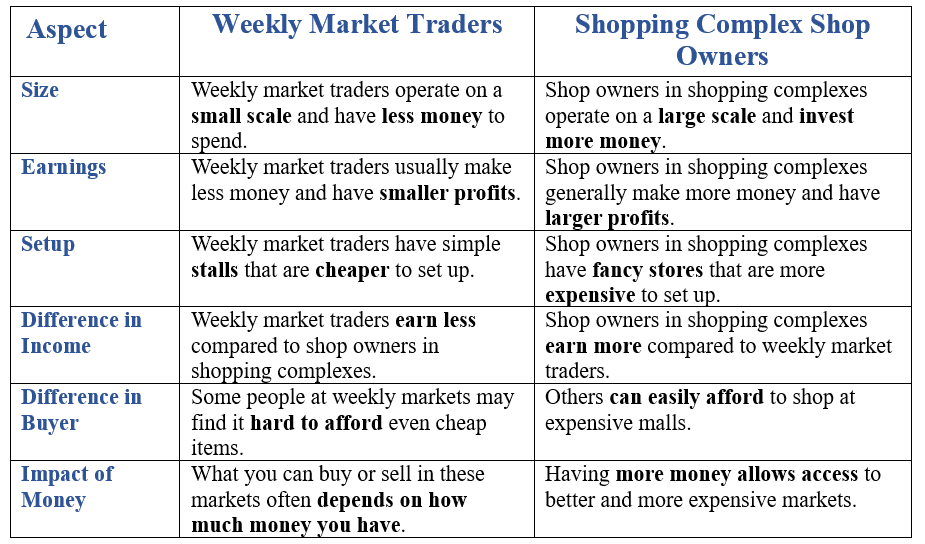 Markets and Equality
Markets and Equality
Note:
(i) We have also examined the chain of markets that is formed before goods can reach us. It is through a car being put together in a factory this chain that what is produced in one place reaches people everywhere.
(ii) When things are sold, it encourages production and new opportunities are created for people to earn.
|
63 videos|371 docs|46 tests
|
FAQs on Class 7 Civics Chapter 7 Notes - Markets Around Us
| 1. What are the different types of markets mentioned in "Markets Around Us"? |  |
| 2. How do weekly markets differ from shopping complexes? |  |
| 3. What role do markets play in promoting equality? |  |
| 4. Why are chain markets significant in today's economy? |  |
| 5. How can local shops in the neighbourhood benefit the community? |  |





















